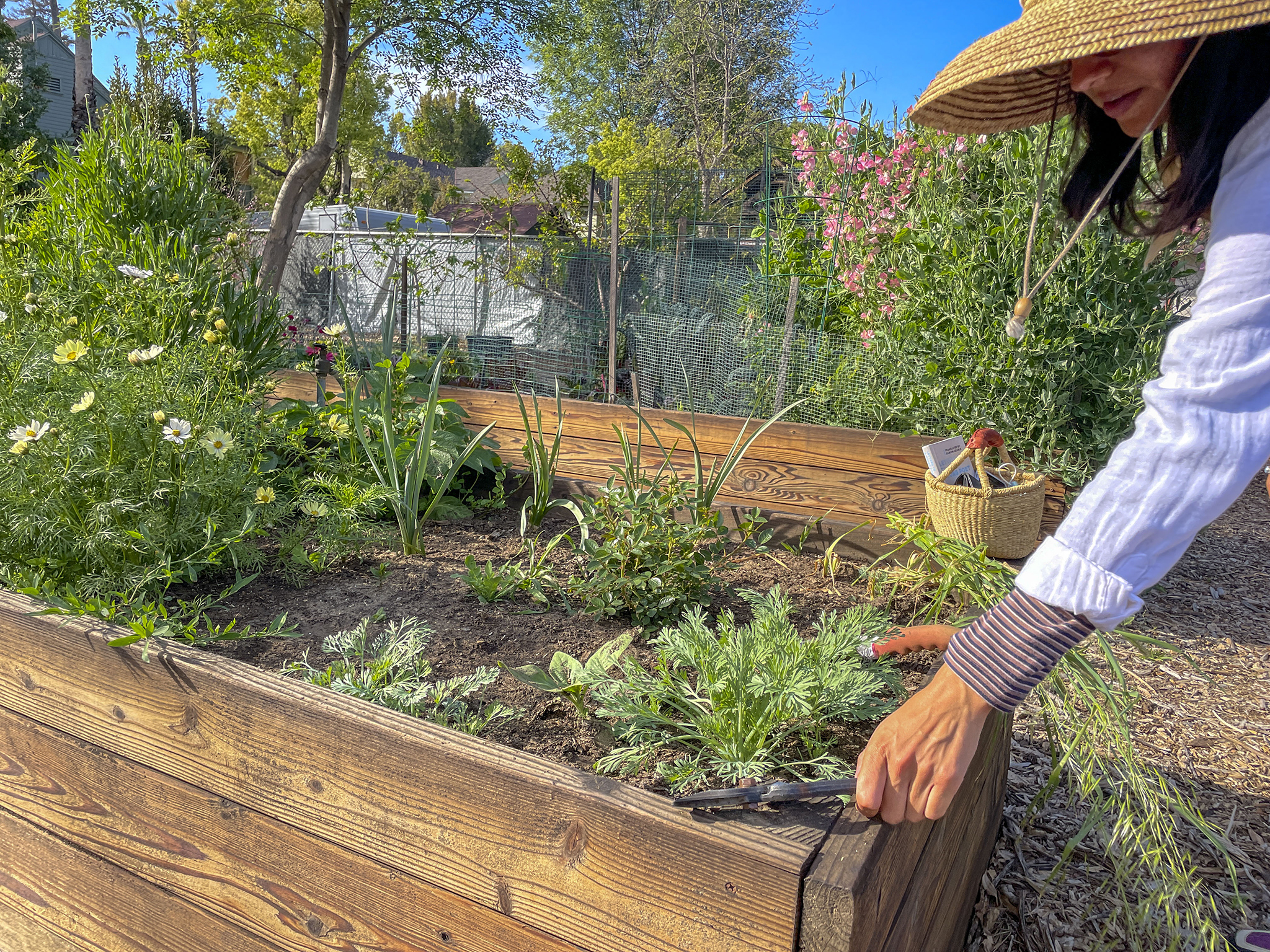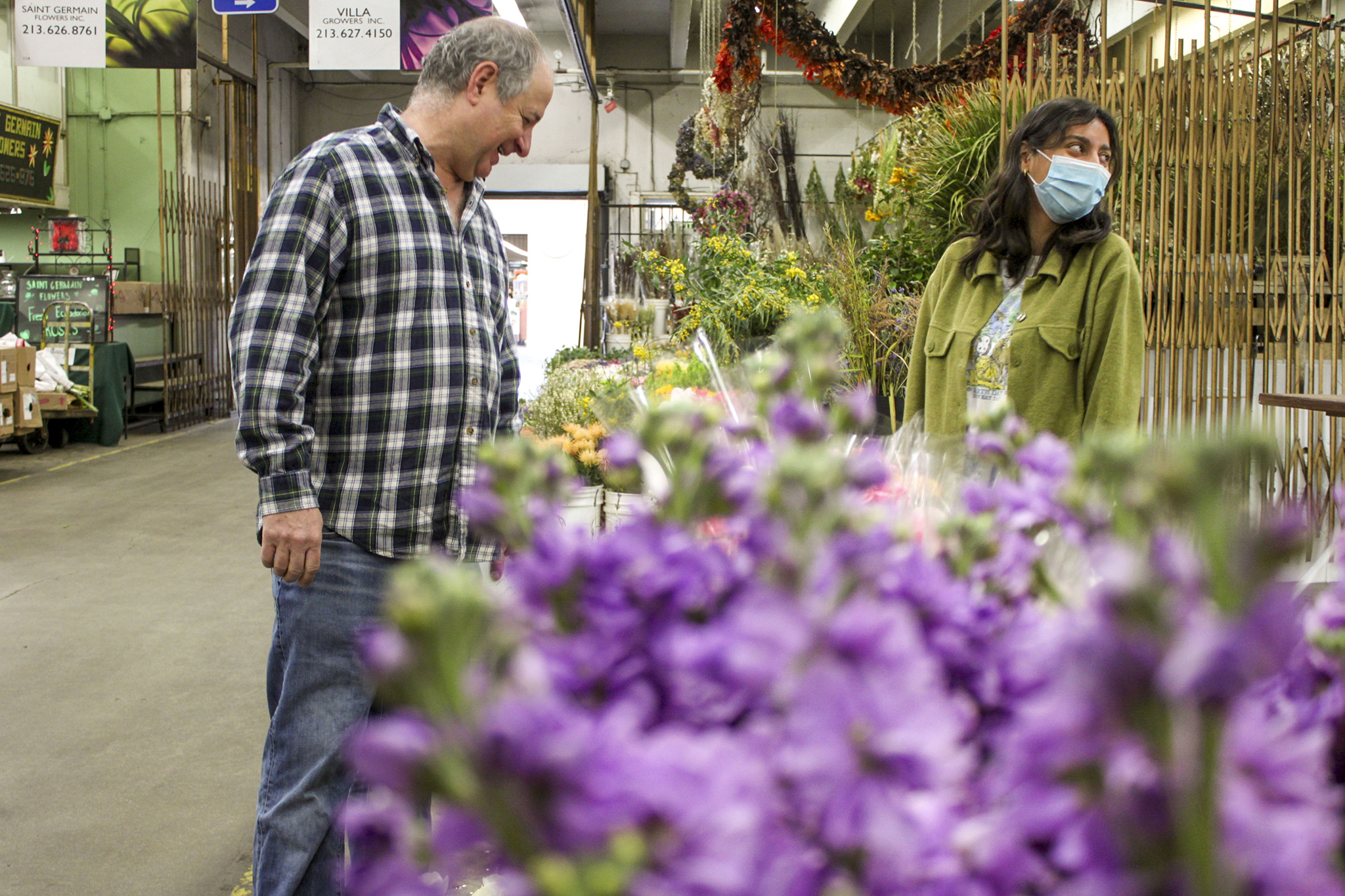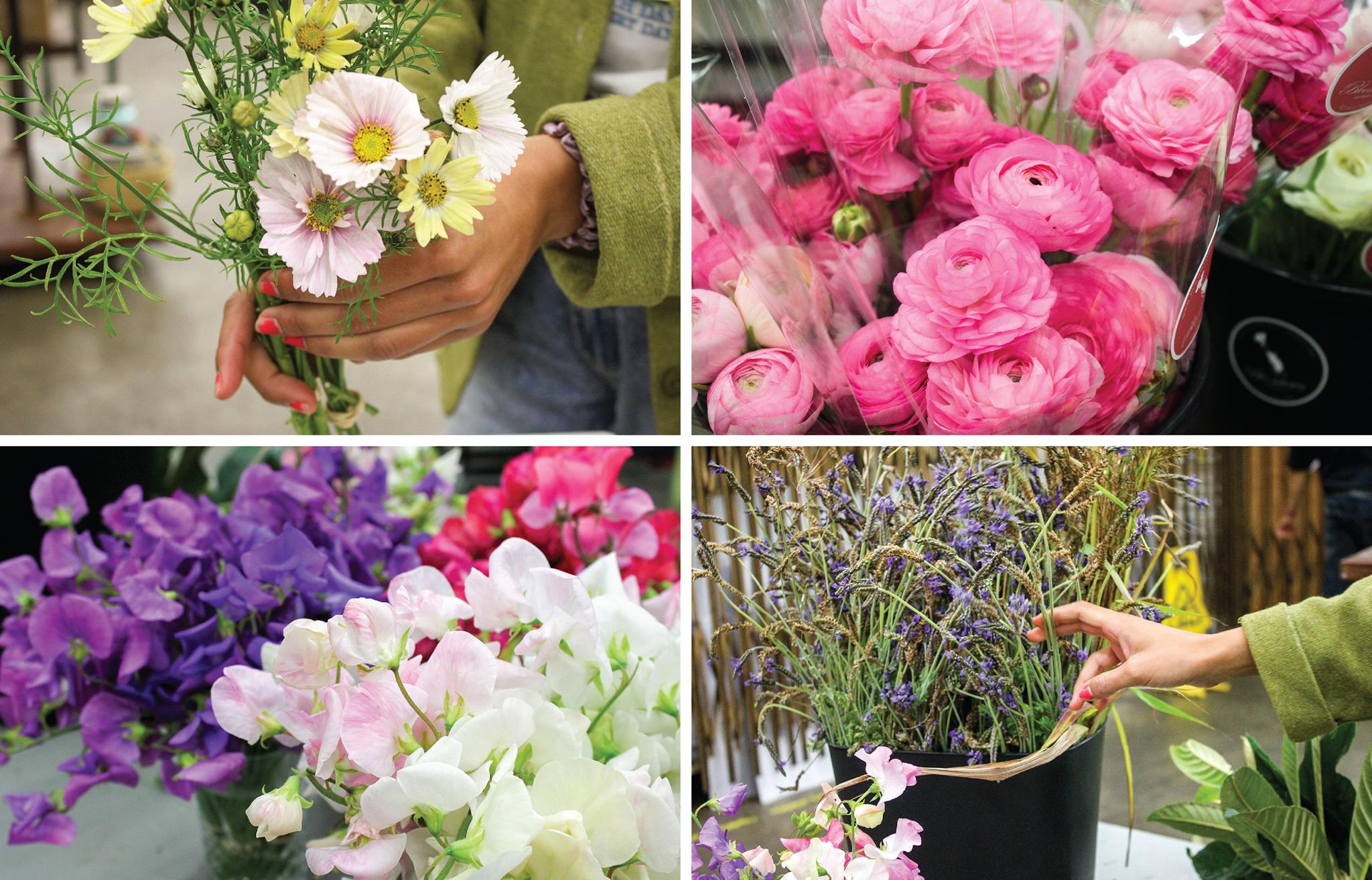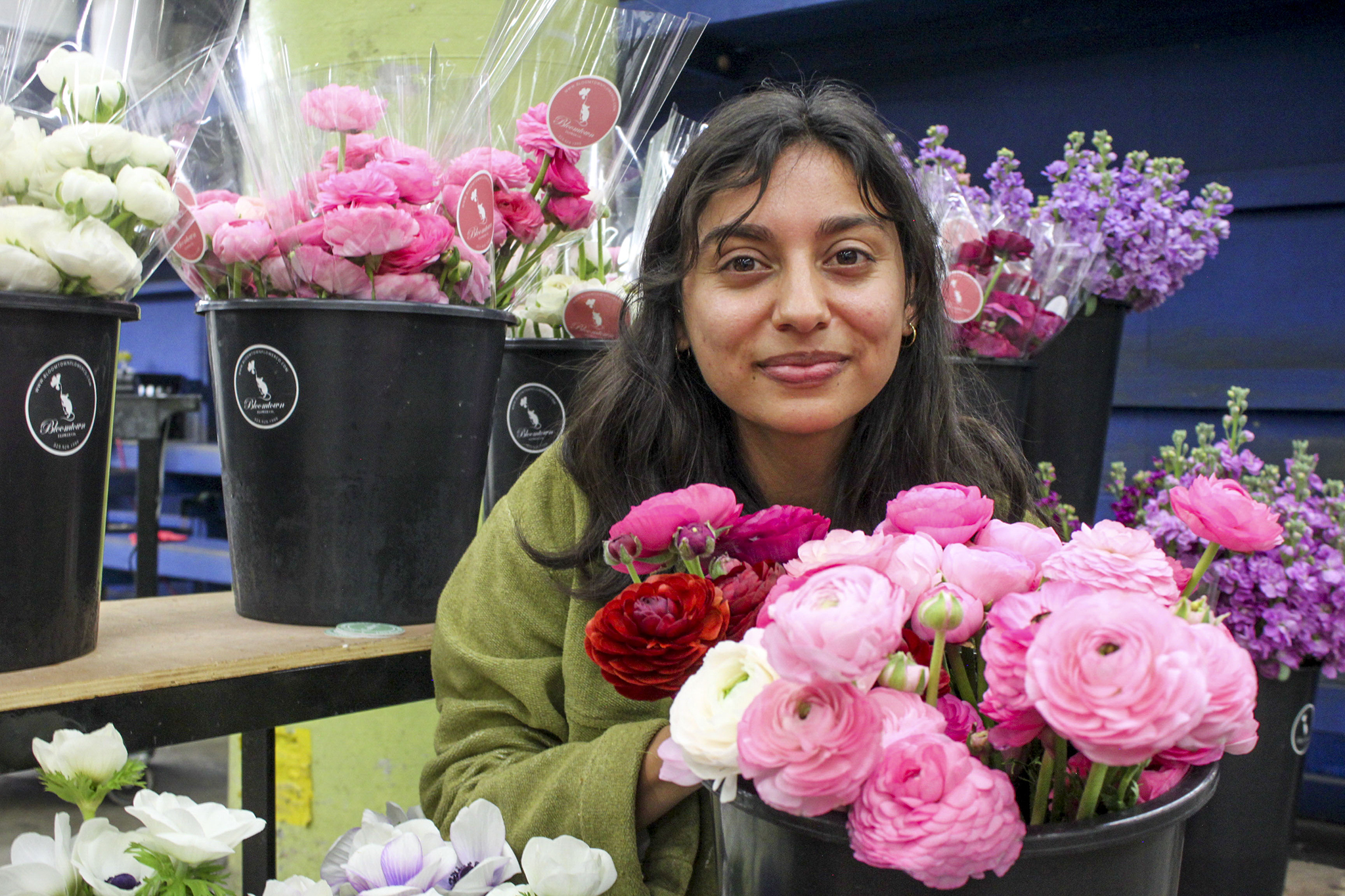
The impact of climate change
We are finding, coaching and training public media’s next generation. This #nprnextgenradio project is created in southern California, where five talented reporters are participating in a week-long state-of-the-art training program.
In this project we are highlighting the experiences of people whose lives are being affected by climate change.
Lucia Ruan speaks with Amanda Galvez, who works with Rose Lane Farms and Gather Flora L.A. For floral farmers like Galvez, climate change makes growing flowers more of a challenge every year.
Illustration by Lauren Ibañez
Floral farmers combat a wasteful industry with local solutions
Before the sun lights up in Los Angeles, Amanda Galvez puts on her iconic straw hat and gets to work.
“Roses in general are very hungry and very thirsty,” Galvez said. “When it’s a really, really hot day, we’re out there watering as much as we can to flood the field.”
Galvez has worked with Rose Lane Farms, L.A.’s only garden rose farm, for four years. Each year, she notices that the heat only gets worse. Eight of the hottest years in L.A. County’s history occurred within the last decade, according to LAist, and scientists predict that temperatures in some areas of Southern California could increase 10 degrees by 2100.
For the love of flowers: re-centering and reconnecting with nature

Galvez prepares to cut her harvest at a community garden near her residence. She grows flowers like irises, California poppies and pansies alongside vegetables like carrots and lettuces. Photo by Lucia Ruan.
“When we have these really high temperatures, things die quicker,” Galvez said. Flower farmers must harvest early in the morning to beat the sun, which causes flowers to wilt.
Galvez sits at a unique position as a floral farmer who also designs bouquets. She witnesses the struggles against climate change from the second a seed is planted in the soil to the moment the completed floral arrangement is handed to the customer — and what she sees doesn’t look good.
The floral industry as it exists today is incredibly wasteful. On top of the unpredictable environmental consequences on the field, about 80% of cut flowers in the U.S. are imported from overseas. The process of packaging these products produces 100,000 tons of plastic, according to researcher Roy A. Larson, and transporting Valentine’s Day bouquets alone releases 360,000 metric tons of CO2 per year, according to the International Council on Clean Transportation.
Nevertheless, customers expect an abundance of roses for major holidays like Mother’s Day, as seen by the $6.2 billion the U.S. spends on commercial flowers every year.
“I think a lot of people are surprised with not only how long something takes to grow, but also just what it takes in general,” Galvez said.
Despite these hardships, the people who grow and sell flowers often find creative solutions. When the pandemic caused the cost of importing flowers to skyrocket and the arrival of deliveries to slow, many florists turned to local farms for their flowers.

Galvez talks to a customer at a downtown flower market, where Gather Flora L.A. sells flowers grown by local farms. The organization can be found at the market every week from Monday through Thursday. Photo by Lucia Ruan.
The Slow Flowers movement, which was founded by Debra Prinzing in 2014, is an online directory encouraging people to seek domestic sources for their flowers. From 2020 to 2021, the number of official members for Prinzing’s Slow Flowers network grew over 30%, according to Bloomberg. Gather Flora L.A., another local organization Galvez works for that connects florists to local farmers, expanded from three to 40 farms in their network within the past year, according to the organization’s market manager, Peter Jantzen.. Not only do initiatives like these decrease the travel distance of the flowers, but they also produce more interesting bouquets.

Gather Flora L.A. partners with Southern California flower farms to bring locally grown flowers like cosmos, ranunculus, lavender and sweet peas (clockwise) pictured above into florists’ hands. The platform currently has flagships in San Francisco and Los Angeles and plans to expand nationwide. Photo by Lucia Ruan.
“People are surprised at how something looks and oftentimes can’t believe that a flower like one of our garden roses is a rose because they’re used to seeing a rose look a certain kind of way,” Galvez said. Unlike roses at grocery stores, Rose Lane Farms’ roses come in yellows and peaches and whites, with wide petals of different sizes unfurled to form an expansive flower head. Some of their customers even mistake them for peonies. Additionally, “The fragrance is unmatched,” Galvez said.
The shift toward local plants has naturally led to an increase in the use of the accessible flora indigenous to California. “They offer a little bit of funkiness into a design,” according to Galvez, and many are drought-tolerant.
Although the aggressive Santa Ana winds leave broken stems and detached flower heads all over the fields, the customers who buy flowers from Rose Lane Farms are finding innovative methods to use every piece of the flower.
Some utilize flower petals toward skincare products, fragrance mixtures, baked goods and even ice cubes to sell in place of their normal product.
To florists and floral farmers like Galvez, flowers are much more than the bouquets that sit in grocery stores or on dinner tables. The act of working their hands through the soils of the earth is a healing process — a tangible way for them to connect with nature.
“As farmers, we have a role as stewards of the land,” Galvez said. “Nature is boss, nature knows and it doesn’t stop for anything.”
Regardless, Galvez said, “even in spite of all these challenges, people are still able to create and continue on.”

Galvez sells bouquets available for purchase from Gather Flora L.A. She is usually accompanied by the organization’s market manager, Peter Jantzen. Photo by Lucia Ruan.
